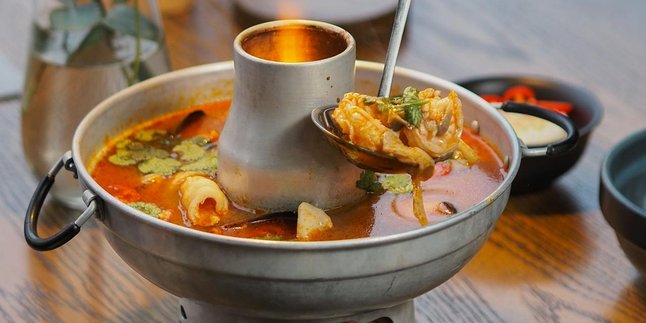Kapanlagi.com - Food packaging is more than just wrapping food products; it is an art that protects and beautifies food. This process aims to protect food from physical, chemical, and microbiological damage during storage, distribution, and sale. Additionally, packaging serves as a communication bridge with consumers through informative labels and attractive designs.
Thus, food packaging becomes a coordinated system that ensures food products are ready to be distributed, stored, and sold, while maintaining the quality and safety of the products we consume. Various experts provide diverse perspectives on food packaging. Philip Kotler defines it as the activity of designing and producing product containers, while William J. Stanton adds that packaging is part of the planning of goods that involves the design and creation of containers.
Basu Swastha also explains that packaging encompasses all activities related to the design and production of containers. From these definitions, we can conclude that food packaging is a complex process that combines product protection, attractive design, strong branding, and effective marketing strategies, with the ultimate goal of creating packaging that is functional and appealing to consumers, as reported by Kapanlagi.com from various sources, Friday (13/12).
1. Main Functions of Food Packaging
Food packaging is not just a protector, but a hero behind the quality and safety of the products we enjoy. With the ability to protect food from physical damage, microbial contamination, and environmental influences, packaging ensures that every bite remains fresh and safe until it reaches the hands of consumers.
Moreover, well-designed packaging also facilitates the processes of distribution, storage, and provides important information such as composition, expiration date, and serving suggestions. An attractive design can capture attention on store shelves, differentiate products from others, and enhance brand image.
In addition, ergonomic packaging that is easy to open and use makes the consumer experience even more enjoyable. With these various functions, packaging becomes a vital element that should not be overlooked in the food world.
2. Types of Food Packaging
Food packaging comes in various attractive and functional forms, tailored to the product characteristics and packaging needs. From lightweight and economical plastic packaging, such as polyethylene suitable for frozen foods, to heat-resistant polypropylene for ready-to-eat meals, each type has its own advantages.
Paper and cardboard packaging are also increasingly favored because they are environmentally friendly, with options like strong kraft paper and corrugated cardboard that provide protection during shipping. On the other hand, metal packaging offers maximum protection against light and contamination, while glass packaging provides a premium feel and unmatched aesthetics.
Not to be outdone, innovative flexible packaging, such as stand-up pouches and sachets, is becoming more popular due to its practicality and space-saving features. With this variety of options, food packaging not only serves to protect the product but also becomes part of an engaging consumer experience.
3. Benefits of Proper Food Packaging
Proper food packaging is not just a protective layer, but also a key to success for producers and consumers. With good packaging, the quality and safety of the product are maintained, protecting it from contamination and damage, as well as extending its shelf life.
In addition, efficient packaging facilitates distribution, reduces the risk of damage, and optimizes storage space. Moreover, attractive packaging can enhance product competitiveness in the market, capture consumer attention, and strengthen brand identity.
For consumers, practical and informative packaging adds value, increases satisfaction, and encourages repeat purchases. Thus, packaging is not just about aesthetics, but also an effective marketing tool that supports overall business strategy.
4. Tips for Choosing Good Food Packaging
Choosing the right food packaging is not just about maintaining product quality, but also about attracting consumer attention. First, match the packaging with the characteristics of the product, such as choosing waterproof packaging for liquid products or moisture-resistant packaging for dry food.
Food safety must also be considered; ensure that the packaging materials are safe and do not react with the food. Functionality is also important; packaging that is easy to open and resistant to extreme temperatures can enhance the consumer experience.
An attractive packaging design that reflects brand identity will distinguish your product on store shelves, while considering sustainability with recyclable or biodegradable materials will add value in the eyes of environmentally conscious consumers.
With a combination of all these aspects, the right packaging can be the key to success in the competitive food business world.
5. Current Trends in Food Packaging
The food packaging industry is currently undergoing transformation with various exciting innovations that reflect consumer needs and awareness. One trend that has caught attention is eco-friendly packaging, where producers are switching to biodegradable and recycled materials to reduce plastic impact.
On the other hand, smart packaging technology offers advanced features, such as freshness indicators and temperature sensors, which not only maintain product quality but also provide an interactive experience for consumers. Additionally, minimalist and transparent designs are increasingly favored, emphasizing honesty and authenticity of products.
Portable packaging solutions are also becoming a remedy for the fast-paced modern lifestyle, while packaging personalization through digital printing technology creates a strong emotional bond between brands and consumers.
With all these innovations, food packaging not only serves as protection but also as an engaging and relevant communication tool.
6. Regulations and Standards for Food Packaging
Food packaging is not just an aesthetic matter; it is a process regulated by various regulations and standards to ensure the safety and quality of the products we consume. In Indonesia, the Food and Drug Supervisory Agency (BPOM) oversees the use of safe packaging materials and the limits of migration of harmful substances into food.
Moreover, packaging labeling must meet certain requirements, such as including important information about the product and allergens, which helps consumers make informed choices. Quality standards for packaging must also be considered, from durability to the ability to maintain product freshness.
Amid increasing environmental awareness, regulations regarding the reduction of single-use plastics and the use of recycled materials have become important focal points. With the existence of international standards such as ISO 22000 and Codex Alimentarius, consistency in the quality and safety of food packaging worldwide can be maintained.
7. Innovation in Food Packaging Technology
The food packaging industry is currently undergoing a transformation thanks to technological advancements that drive various interesting innovations. One of them is active packaging that interacts directly with food, such as oxygen absorbers to extend shelf life and antimicrobial release agents to combat bacteria.
Equally fascinating, smart packaging comes with modern features like time-temperature indicators and freshness sensors, providing real-time information that helps consumers choose the best products. On the other hand, nanotechnology offers innovative solutions with nanoparticles that enhance packaging durability and detect contaminants.
For those concerned about the environment, biodegradable and edible packaging made from natural materials like seaweed becomes an eco-friendly option that reduces waste. Finally, high barrier technology presents thinner packaging while still effectively protecting products.
8. The Impact of Packaging on Food Quality and Safety
Packaging is not just a wrapper, but a faithful guardian of the quality and safety of food products. With the right packaging, food products are protected from harmful contaminants such as dust, insects, and chemicals, thereby maintaining food safety and minimizing the risk of foodborne illnesses.
Moreover, good packaging also extends shelf life, reduces waste, and enhances distribution efficiency. The nutritional value of the product is preserved, protecting vitamins and minerals from degradation, as well as maintaining protein quality.
In addition, packaging serves to maintain the sensory characteristics of color, aroma, texture, and taste to remain appealing to consumers. Equally important, the security features on packaging protect against counterfeiting and sabotage, preserving consumer trust and brand reputation.
Thus, packaging becomes a vital element in ensuring that food products are not only safe but also of high quality.
9. Environmental Aspects in Food Packaging
(kpl/rao)
Disclaimer: This translation from Bahasa Indonesia to English has been generated by Artificial Intelligence.












